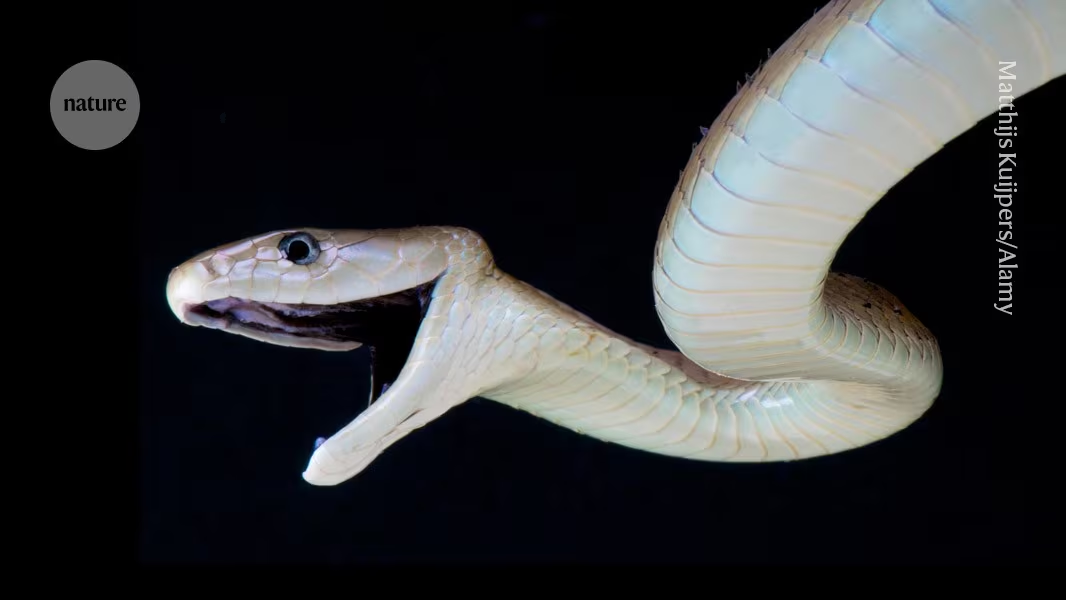A Global Breakthrough in Treating Snakebite Envenoming
Snakebite envenoming remains one of the world’s most devastating yet neglected public health crises. Classified by the World Health Organization (WHO) as a Neglected Tropical Disease (NTD), snakebites kill an estimated 80,000 to 138,000 people annually and cause hundreds of thousands of severe disabilities, primarily in rural, low-resource communities across Africa, Asia, and Latin America.
In a landmark development offering profound hope for tackling this crisis, scientists have engineered a single, broad-spectrum antivenom capable of neutralizing the venom of 17 different medically important snake species. The breakthrough, detailed in research published in Nature, relies on utilizing tiny, highly stable antibodies—known as nanobodies—harvested from llamas and alpacas.
This new approach addresses the critical limitations of conventional antivenoms, which are often expensive, require strict refrigeration, and are highly specific, meaning a different antivenom is needed for nearly every species or region. The development paves the way for a universal, heat-stable treatment that could revolutionize snakebite management worldwide.
The Limitations of Traditional Antivenoms
For over a century, antivenom production has relied on a process called immunization. Venom is injected into large animals, typically horses or sheep, which then produce large antibodies. These antibodies are harvested, purified, and used as the treatment.
While effective, this method has severe drawbacks that contribute to the ongoing crisis:
- Narrow Specificity: Most antivenoms are monospecific (effective against only one species) or polyspecific (effective against a small regional group). This requires healthcare workers to accurately identify the biting snake, a near-impossible task in remote settings.
- Cold Chain Dependency: Traditional antivenoms require continuous refrigeration (a “cold chain”), which is often non-existent or unreliable in the tropical regions where snakebites are most common.
- Adverse Reactions: The large, foreign antibodies often trigger severe immune responses in humans, including anaphylaxis and serum sickness, necessitating careful administration in a clinical setting.

Nanobodies: The Llama and Alpaca Advantage
The new therapeutic strategy bypasses these issues by leveraging the unique immune systems of camelids (llamas, alpacas, and camels). These animals naturally produce two types of antibodies: the standard large antibodies found in most mammals, and a smaller, simpler type known as nanobodies (or single-domain antibodies).
Nanobodies are significantly smaller and more robust than conventional antibodies. This size and stability offer several key advantages for antivenom development:
- Heat Stability: Nanobodies are inherently more stable and resistant to heat, potentially eliminating the need for refrigeration and simplifying distribution to remote areas.
- Targeting Conserved Sites: Due to their small size, nanobodies can access and bind to conserved epitopes—critical, shared molecular structures on venom toxins that are necessary for the toxin’s function, regardless of the snake species.
- Reduced Immunogenicity: Being smaller and simpler, they are less likely to trigger the severe adverse immune reactions associated with traditional treatments.
Researchers, including a team led by Professor Andreas Laustsen from the Technical University of Denmark (DTU), engineered a cocktail of these nanobodies. They identified nanobodies that specifically target the most destructive components of snake venom, such as phospholipase A2 (PLA2) toxins, which are responsible for neurotoxicity and muscle damage across many different snake families.
Scope and Efficacy: Neutralizing 17 Major Threats
In pre-clinical trials conducted in mice, the single nanobody cocktail demonstrated remarkable efficacy against a wide range of venoms. The 17 species neutralized represent the most dangerous snakes across Africa and Asia, covering the major families responsible for the vast majority of snakebite deaths globally.
Key Species Neutralized by the Nanobody Antivenom:
The antivenom proved effective against major neurotoxic and hemotoxic snakes, including:
- Elapids (Neurotoxic): The highly lethal black mamba (Dendroaspis polylepis), the king cobra (Ophiophagus hannah), and various species of kraits (like the many-banded krait, Bungarus multicinctus), and several types of cobras (Naja species).
- Vipers (Hemotoxic/Myotoxic): Medically significant vipers such as the saw-scaled vipers (Echis species), Russell’s vipers (Daboia species), and puff adders (Bitis arietans).
By targeting the conserved, essential toxins shared across these diverse evolutionary families, the researchers created a true broad-spectrum solution that transcends geographical and species boundaries.

Overcoming the Cold Chain Challenge
One of the most significant practical implications of this research lies in the potential for heat stability. Because nanobodies are structurally simpler and more robust than conventional antibodies, they can potentially be formulated as a lyophilized powder (freeze-dried) that does not require refrigeration.
This feature is crucial for improving access in remote, tropical areas where snakebite incidence is highest. If the final product proves stable at ambient temperatures, it could be stored in village clinics and carried easily by first responders, drastically cutting the time between bite and treatment—the single most important factor in patient survival.
Furthermore, the production process for nanobodies is potentially more scalable and cost-effective than the traditional method, which relies on maintaining large herds of immunized animals and complex purification processes.
“This represents a fundamental shift in how we approach antivenom development. By focusing on conserved targets using these incredibly stable nanobodies, we can potentially create a universal treatment that is safer, more affordable, and accessible where it is needed most,” stated one of the researchers involved in the project.
The Road Ahead: Clinical Trials and Availability
While the results in pre-clinical models are highly encouraging, the new nanobody antivenom is not yet available for human use. The research is still in the crucial development phase, and significant steps remain before it can reach patients.
Next Steps in Development:
- Safety and Toxicology: Rigorous testing must confirm the nanobody cocktail is safe and non-toxic in larger animal models.
- Manufacturing Scale-up: Developing cost-effective, large-scale manufacturing processes to produce the antivenom consistently.
- Human Clinical Trials (Phase I, II, III): Extensive testing in human volunteers and snakebite victims to prove efficacy and safety in real-world scenarios.
Experts estimate that, even with accelerated development, it will take several years for this nanobody-based antivenom to gain regulatory approval and become widely available. However, the success of the pre-clinical data provides a powerful proof-of-concept for nanobody technology as the future of antivenom therapy.

Key Takeaways: Why This Matters
This research marks a pivotal moment in the fight against snakebite envenoming, a crisis that disproportionately affects the world’s poorest populations. The key implications for global health are substantial:
- Broad Protection: A single treatment effective against 17 of the world’s most dangerous snakes, simplifying treatment protocols.
- Enhanced Stability: Nanobodies offer the potential for a heat-stable antivenom, eliminating the need for refrigeration (the cold chain challenge).
- Improved Safety Profile: The small size and unique structure of nanobodies promise fewer adverse immune reactions compared to traditional horse/sheep-derived antivenoms.
- NTD Focus: This development provides critical momentum and funding justification for addressing snakebite envenoming as a serious global health priority.
Conclusion
The development of a broad-spectrum antivenom using llama and alpaca nanobodies represents a scientific leap forward. By moving away from outdated, species-specific treatments toward a universal, stable, and potentially safer solution, researchers are providing a viable pathway to mitigate the devastating human cost of snakebite envenoming. While clinical availability is still years away, this breakthrough offers tangible hope for the millions living under the constant threat of deadly snakebites across the globe.
Originally published: October 29, 2025
Editorial note: Our team reviewed and enhanced this coverage with AI-assisted tools and human editing to add helpful context while preserving verified facts and quotations from the original source.
We encourage you to consult the publisher above for the complete report and to reach out if you spot inaccuracies or compliance concerns.

